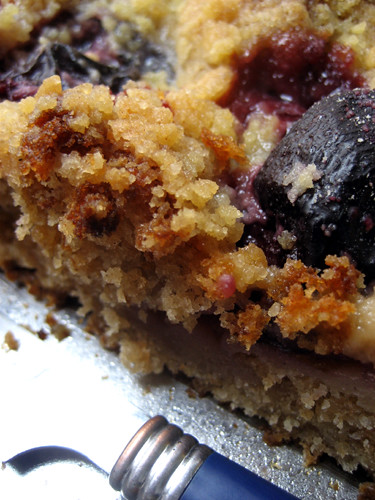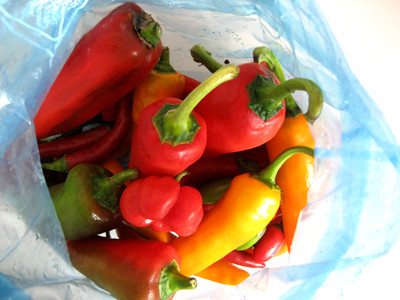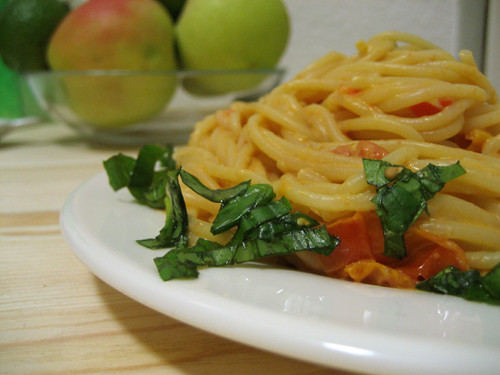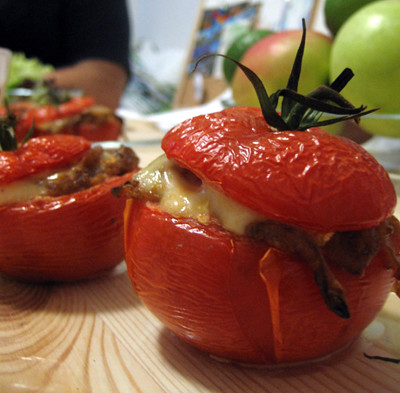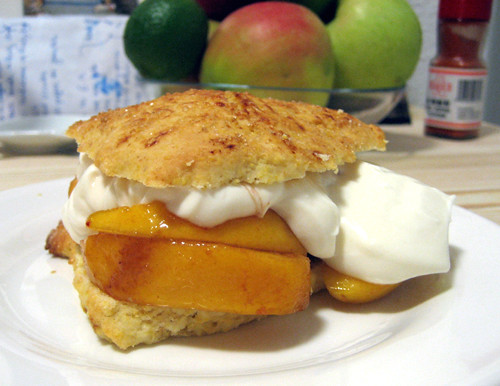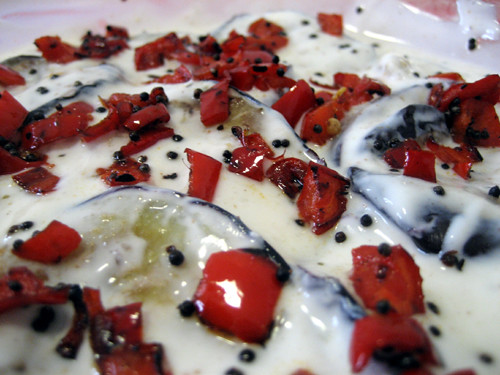
Last night I had vindaloo curry for dinner. I wanted to make a raita to go with it, so I did a quick search for raita recipes just to check the proportions. I was planning on making a cucumber raita, but my search resulted in several recipes for eggplant raita. And boy am I glad they did! The eggplant raita that I ended up making was good. Really good. As in
"I'll-make-this-for-dinner-again-tonight" good. It's very cool and creamy and flavourful, kind of like an Indian baba ghanoush.
As always with eggplant, make sure that the oil is really, really hot before you put the eggplant in. Otherwise it will absorb quite a lot of oil, making this dish not very healthy.
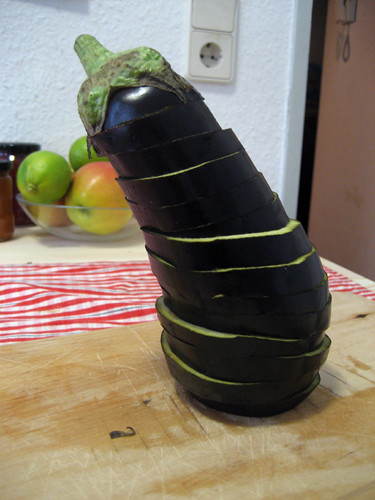 Also-- salting the eggplant is optional. I think it does make eggplant less bitter, but I know not everyone agrees with me on this account. So do as you see fit.
Also-- salting the eggplant is optional. I think it does make eggplant less bitter, but I know not everyone agrees with me on this account. So do as you see fit.
Don't use too much garam masala-- you really only want just a hint of it.
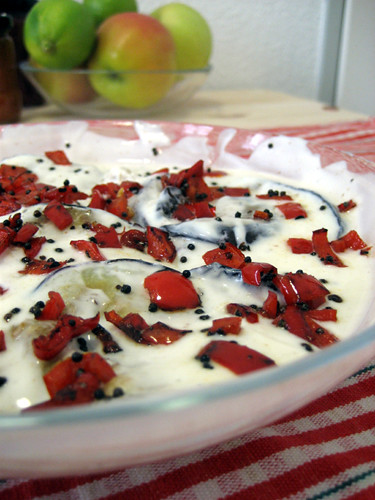
Eggplant Raita
1 medium eggplant
2 cups plain, unsweetened soy yoghurt
1 tsp sugar, preferably unrefined
3/4 tsp salt, or to taste
1/4 - 1/2 tsp garam masala
olive oil
Tempering:
1 tsp black mustard seeds
1 red chili, chopped
Cilantro leaves, for garnish
Slice the eggplant into 1/4" slices. Generously sprinkle both sides of the slices with salt, and let sit for half an hour. When this time is up, rinse the slices and press the water out.
Meanwhile, combine the yoghurt, sugar, salt, and garam masala in a bowl. Heat the oil-- enough to coat the bottom of the pan-- in a skillet over medium-high heat. When the oil is really, truly hot place the eggplant slices in the pan. Let them cook until they are golden, approximately 3
minutes, then flip and let the other side brown. Remove them from the pan and let them drain on a mesh rack or paper towels. Let them cool slightly.
Now make the tempering mixture. Pour out the excess oil, leaving about 1 tsp in the bottom of the pan. Put the mustard seeds in the pan and cover. When the seeds have stopped popping, add the chili and briefly saute until the chili is slightly softened, about 1 minutes. Remove from the heat.
Mix the eggplant with the yoghurt. Smooth the surface, then sprinkle the tempering mixture on top. Garnish with the coriander. Let chill before serving.

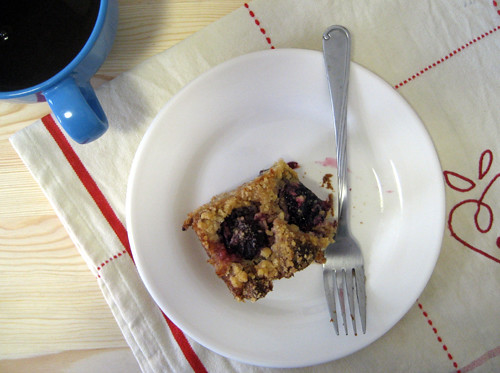
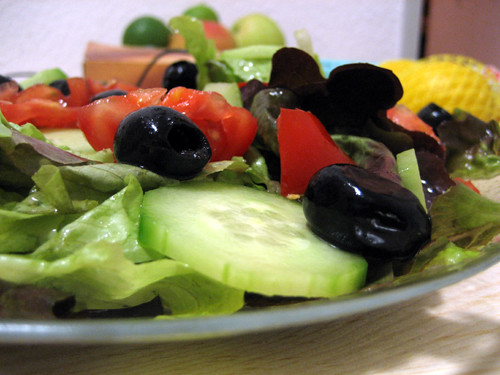 Plum cake (Pflaumen Kuchen) is really popular in Germany, and no wonder: you can get really good plums here. Use small, dark purple, Italian plums here.
Plum cake (Pflaumen Kuchen) is really popular in Germany, and no wonder: you can get really good plums here. Use small, dark purple, Italian plums here.